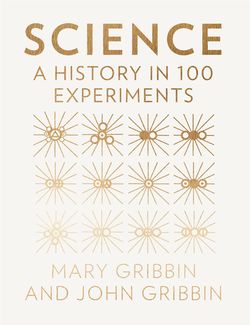Читать книгу Science: A History in 100 Experiments - John Gribbin - Страница 12
Оглавление| No. 7 | CIRCULATION OF THE BLOOD |
Even after the publication of the Fabrica (see here), in the second half of the sixteenth century and early in the seventeenth century there was still strong opposition to the idea that classical teachers such as Galen could be wrong. So, although the English physician William Harvey was born in 1578 and studied the circulation of the blood in the early decades of the seventeenth century, he did not publish his discoveries until 1628, by which time he had gathered an overwhelming weight of evidence to support his ideas. (He did, however, give lectures on his work in 1616.) The result was a book, De Motu Cordus et Sanguinis in Animalibus (On the Motion of the Heart and Blood in Animals, known as De Motu), which presented an open-and-shut case based on a series of genuinely scientific experiments carried out over the previous two decades. All this was done in Harvey’s spare time as a successful physician who had studied in Cambridge and Padua and, like William Gilbert, became (in 1618) one of the Court Physicians to James I, and later personal physician (a much more important post) to Charles I. Both Williams were contemporaries of another William, Shakespeare, who died in 1616.
© Science Photo Library
Title page from William Harvey’s De Motu.
Before Gilbert, following the teaching of Galen, it was thought that veins and arteries carried two different kinds of blood. One kind, supposedly manufactured in the liver, was thought to be carried through the veins to nourish the tissues of the body, getting used up in the process and being replaced by new blood from the liver. The other kind of blood was thought to be carried in the arteries, conveying a mysterious ‘vital spirit’ from the lungs to the tissues of the body.
As with Gilbert (see here), the way in which Harvey worked and presented his results was as important as the discoveries themselves. He did not base his ideas on abstract philosophising, but on direct measurements and observations. The key insight came when he measured the capacity of the heart and, by taking a typical pulse rate, worked out how much blood it was pumping each minute. He found that, in modern units, a human heart pumps about 60 cubic centimetres with each beat, adding up to nearly 260 litres in an hour. That much blood would weigh three times as much as a human, so it was clearly impossible that it was all being manufactured in the liver (or anywhere else) every hour. The only alternative was that there was a lot less blood, and that it was continuously circulating around the body, out from the heart through the arteries and back through the veins. An equivalent system circulates blood between the lungs and the heart, carrying not ‘vital spirit’ but oxygen. All this was born out by Harvey’s observations of the tiny valves in veins (discovered by one of Harvey’s teachers in Padua, Hieronymous Fabricius) which allow venous blood to flow towards the heart, but not away from it.
Having reached this conclusion by observation, Harvey then established his case with a series of experiments, one of which stands out for its simplicity and clarity. If he was right, there must be a connection between arteries and veins. As arteries lie deeper below the surface of the skin than veins, he tested this by tying a cord (ligature) around his own arm, tight enough for it to cut off the flow of blood in his veins, but not in his arteries. As blood continued it flow from the arteries into the blocked-off veins, the veins behind the ligature swelled up dramatically. He also pointed out that arteries near the heart are thicker than those further away from it, because they have to be strong in order to cope with the powerful pumping action of the heart.
© Dr Jeremy Burgess/Science Photo Library
Woodcut from William Harvey’s book, De Motu Cordis et Sanguinis in Animalibus. The illustrations show the valves in the superficial veins of the forearm. On the left, a finger has been passed along the vein from O to H (away from the heart). The stretch of vein is emptied and remains so because of the valve at O.
There were still elements of mysticism in Harvey’s thinking, and he saw the heart as not merely a pump but a place where the blood was made perfect by ‘the foundation of life, and author of all’. It was René Descartes who took the next step, drawing on Harvey’s work, and said, in 1637, that the heart is simply a mechanical pump.
Although his book caused great interest in England, Harvey’s ideas about the circulation of the blood were not fully accepted during his lifetime, except by pioneers such as Descartes. One reason was that blood-letting was then (and would long remain) a treatment for illness, and the rationale for such treatment would be undermined if there was a limited amount of blood in the body.
Harvey died in 1657 and soon afterwards the development of the microscope (see here) made it possible to see the tiny connections between veins and arteries, establishing once and for all that Harvey had been correct.
